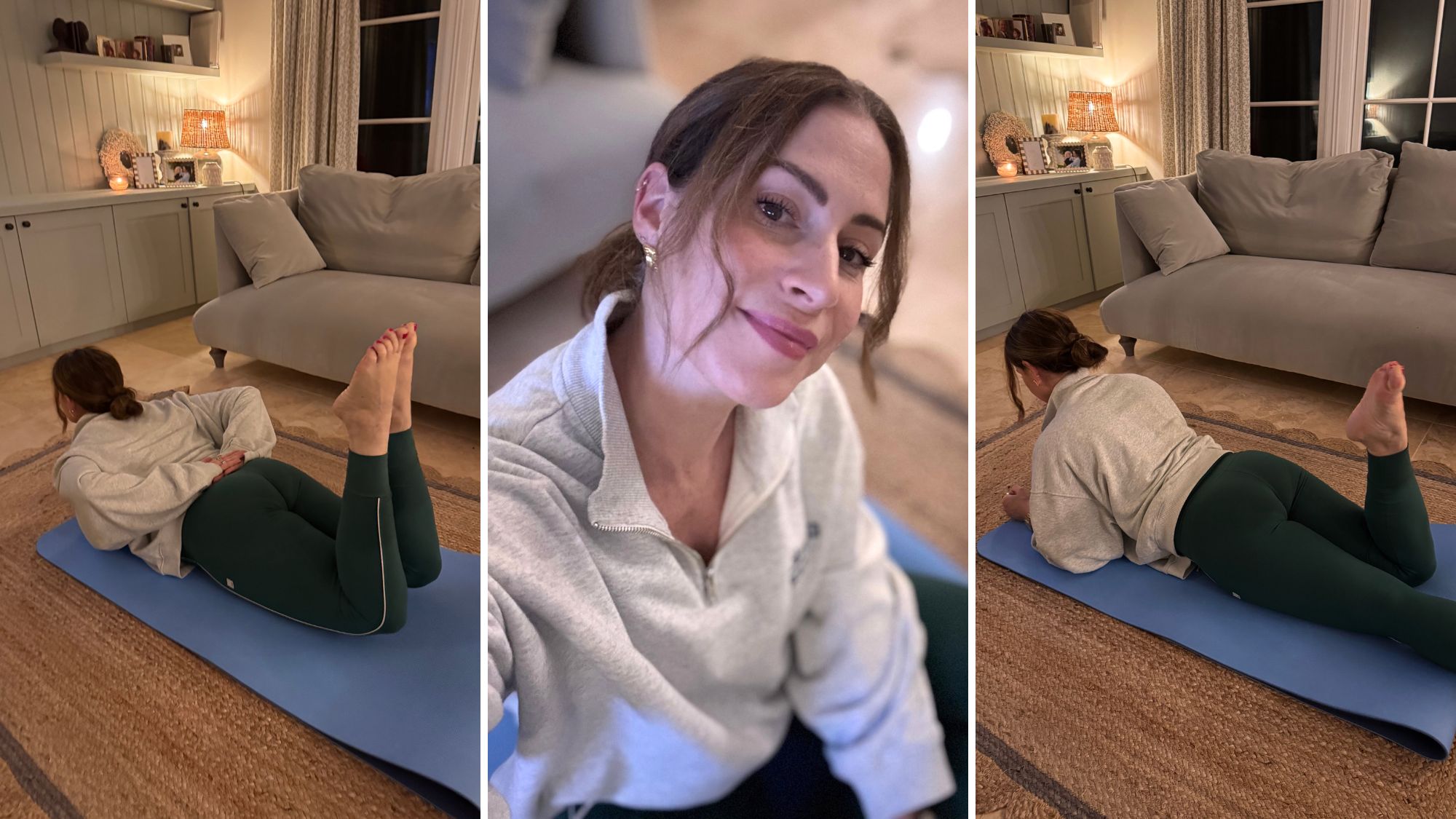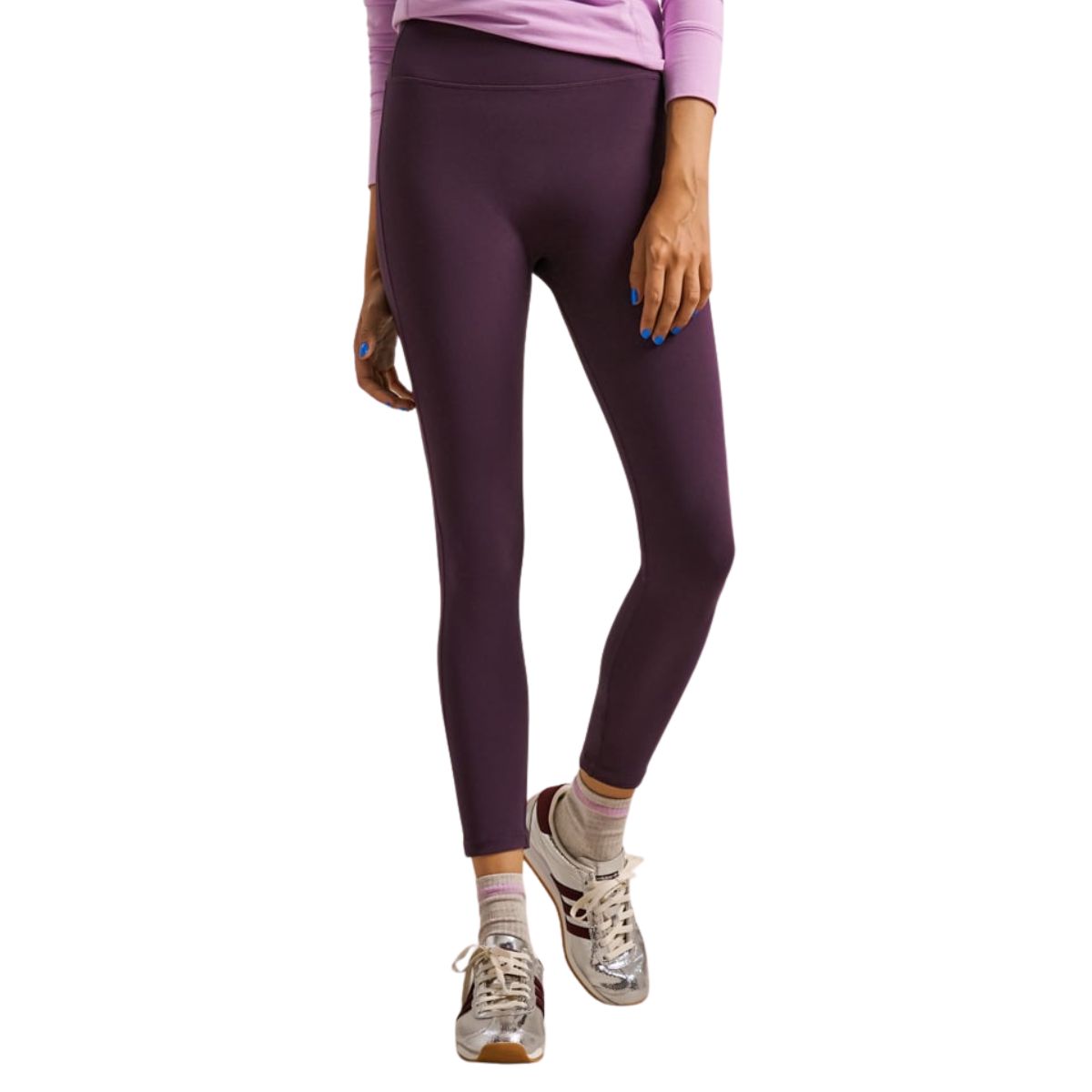I Tried a Pilates Leg Kick Every Day for a Week – and It’s Worked Wonders for My Back and Posture
Sometimes the smallest moves pack the biggest punch.


I've been practising Pilates for over a decade, but I've never really engaged with the Pilates leg kick. Given that it's one of the original 34 moves curated by Joseph Pilates back in the early 20th century that form the foundation of the practice, I'm kind of ashamed to admit that it's not a move I've ever paid much attention to.
While it's not one of my go-to moves, I'm always up for learning more about the fundamentals of my favourite hobby, so when I was asked to try a Pilates leg kick every day for a month, I was keen, to put it mildly.
And doing a little pre-challenge research only solidified my desire to try it out: all my tried and trusted Pilates coaches seem to love it, so it's clear I might be missing a trick here. The move is purported to improve core, back, glute and leg strength (so, basically the entire body, then) and (the best bit, IMO) it seems pretty easy to do.
For those who aren't yet familiar with the well-established, science-backed benefits of Pilates generally, (but seriously, where have you been?), here's a quick refresher: studies (such as this one, published in the International Journal of Rheumatic Diseases) show that the practice is effective in improving range of motion, while further research (like this study, published in the Springer Open Journal) shows that it's also beneficial for mental health and wellbeing, too.
Keep scrolling to discover how I got on when I tried the move everyday for a week, and for more Pilates content, do check out our guides to the best Pilates workouts, the many different types of Pilates, and the best Pilates apps to try at home, plus find out how one Health Writer got on when she tried the trending Lagree method, here.
Pilates leg kicks are purported to ease shoulder tension and improve back strength - after trying them for a week, I concur
What is a Pilates leg kick?
As always, the first thing I do is turn to my trusted experts to learn as much about a Pilates leg kick as I can - and it turns out that there are a few different types.
"Pilates leg kicks usually refer to exercises from the classical mat repertoire such as the single leg kick (sometimes called a one-leg kick) and the double leg kick," explains multi-disciplinary trainer Tara Riley. "They are done lying face down and kicking heels towards the bottom with a focus on extension in the back body, as well as challenging hamstrings, glutes, hips and shoulder girdle stability."
Celebrity news, beauty, fashion advice, and fascinating features, delivered straight to your inbox!
What are the benefits of a Pilates leg kick?
Before I get started trying the move every day, I'm keen to discover what I can expect to gain, benefits-wise. And I'm not disappointed: this move really has legs (pun intended).
1. They strengthen the posterior chain
Pilates leg kicks really work the back of the body, challenging what's known as the posterior chain - the group of muscles that run the length of the back, and down the backs of the legs. We're talking the glutes, lower back, hamstrings and calves.
"The Pilates leg kick series - which includes the single leg, double leg and side lying kick - is wonderful for strengthening the back of the body," says Pilates instructor Aleksandra Warburton. "They particularly challenge the glutes, hamstrings, and spinal extensors, which are often underused in daily life."
2. They open up the front of the body
But the work doesn't end there: a Pilates leg kick is also good for opening up the front of the body, too.
"Because they’re performed in extension (a slight backbending position), they gently open up the chest and hips, which can relieve tension caused by long hours at a desk," shares Warburton.
3. They enhance posture
"Since the Pilates leg kick is so great for opening up the shoulders and upper back, it can really help improve your posture and ease off that all-too-familiar neck and shoulder tension," shares Will Broome, director at Gym Equipment. "They're a great move for desk workers, chronic hunchers and phone addicts!"
4. They build coordination and control
Like most Pilates moves, the leg kick is supposed to be performed in a controlled way - Broome warns "they're not just about flinging your legs up and hoping for the best." This means that they'll require a degree of concentration, which is perfect for achieving that all-important mind-muscle connection.
"Pilates leg kicks will challenge your coordination and help you develop that beautiful connection between strength and length that defines the Pilates method," notes personal trainer and Pilates coach, Aimee Victoria Long.
How to do a Pilates leg kick with good form
As with all moves, it's super important to make sure you're performing the exercise correctly. This not only prevents injury and strain, but also ensures that you're maximising the benefits, too.
Warburton suggests the following steps:
- Begin by lying on your front, lifting yourself up on your forearms with your chest lifted and core engaged (belly off the mat).
- Pull your shoulder blades down your back (into their imaginary back pockets) and keep your gaze forward.
- Interlace your arms behind your back and rest your head on one cheek.
- As you inhale, kick both heels towards your glutes three times in a small, controlled motion.
- Extend the legs, reaching the arms away from the body and lifting the chest, opening through the shoulders and upper back.
Who are Pilates leg kicks best for?
Good news, a Pilates leg kick is fairly universally accessible.
"Pilates leg kicks are suitable for most levels, including beginners, as long as they’re performed mindfully and with extra focus on correct alignment," shares Warburton. "For those with lower back sensitivity, a small cushion can be placed under the hips or performing the move on the reformer with light spring resistance can make the exercise more comfortable and supportive. As mentioned above, you can always start with just one leg kick, before progressing up to two or three in a row, before you lower back down on the mat."
I spent a week doing Pilates leg kicks every day - here are my honest thoughts
Days one to three
Always keen to roll my Pilates mat out and flow through some moves, when day one of my week-long challenge arrives, I'm more than ready to get started. I begin with a classic traditional mat class with one of my favourite online instructors, Lottie Murphy, so I'm nicely warmed up for my first leg kick.
And - I'll level with you - they're not quite as simple as I'd previously thought. Since I've been doing Pilates for a while, I decided to skip the single-leg version and go straight into a double-leg kick - and it's clear that my form is going to need some work. I feel wobbly and stiff, not controlled and coordinated - a big thumbs down, for day one.
So, before attempting the move on day two, I went back to the experts for advice. "A really common mistake, especially with the double leg kick, is letting the pelvis lift off the mat," says Long. "Keep it pressed down and focus on small, controlled kicks instead of big, fast ones."Also, keep your neck long. Think about lifting through the chest, not the head."
And with that, the move did feel more controlled, although with my form corrected, it also felt more challenging - which is actually a win, as it shows I'm doing it right.
“If you’re finding it easy, you’re likely not doing it right!” agrees Warburton. "Pilates is not an easy practice; we can make lots of modifications to meet you wherever your body is currently at, but in its full form, it's a challenging repertoire which aims to teach you something new and get your full body working."
I make an extra effort to initiate the movement from my core, too, as it's all too easy to allow my legs and back to take over. I find the key here is to stay slightly lifted in the core, rather than having contact with the mat.
On day three, I can really feel the move in my perma-tight hamstrings - I even have to stop, mid-kick, when cramp sets in. But I do feel my upper body is more stable, which I'm taking as a win.
Days four to seven
Moving into the second half of the week, I'm starting to get the hang of the move - but, that said, it's tougher to motivate myself to do it. It's not a move that feels particularly rewarding, and - were it not for this challenge - I can't imagine myself racing to do it again.
Annoyingly, on day five, I have some stiffness in my mid-back, which my Pilates teacher thinks is likely a result of over-extending through my spine. With this in mind, I drop back to a single leg kick for the final couple of days, since this exercise is performed without opening up the back and chest.
Despite some soreness, I do think I've benefited from the process. I definitely feel more connected to how my back is moving - something I've always struggled to engage with - and this tallies with what the experts have told me to expect. Best of all, my hips feel ever so slightly looser, too - which is a real win for me.
"If you perform the leg kicks each day (with good form), you might notice the back of your body—your glutes and hamstrings feeling a bit more ‘awake’ or engaged," notes Riley. "Your chest or front of hips may feel a bit more open. You’re working the back body and core support, so you may start to stand a bit taller.
"I wouldn’t expect a dramatic transformation in just seven days, especially if you’re new to Pilates. But you might gain confidence and a deeper feeling of connection in those muscles and that space of your body."
Will I continue to do a Pilates leg kick daily? While I absolutely have a newfound respect for the move when properly performed, I'm not convinced that doing any type of exercise every day is strictly necessary.
"While it’s safe to practise leg kicks frequently, I tend to recommend weaving them into your routine two to four times a week, depending on your other movement types and workouts," agrees Warburton. "As with all Pilates movements, quality matters far more than quantity. It’s better to perform a few well-controlled sets, focusing on alignment and precision, than to rush through them daily without proper form."
Shop MC UK's Pilates essential kit now:
Can a Pilates leg kick be modified to suit different abilities?
"Absolutely!" says Waburton. "Beginners can reduce the range of motion when performing the movement with one leg at a time, or even keeping the head, neck and shoulder down on the mat before lifting up on the forearms, for example, focusing instead on building stability (in the pelvis) before increasing intensity and the lift.
"For a more advanced variation, try holding the lifted leg for a few seconds, adding a bit of choreography by alternating between a flexed and pointed foot for the single leg 'kick kick' before releasing back down on the mat, or just adding a small pulse at the top to increase time under tension and challenge the endurance of the posterior chain."

Anna Bartter is a freelance journalist who writes about health, fitness and women's lifestyle for publications including Stylist, Metro and Psychologies, among others.
She's always on a quest to find a variety of fun and functional workouts that give you the most bang for your workout buck and she's passionate about championing movement for everyone's mental and physical wellbeing.



